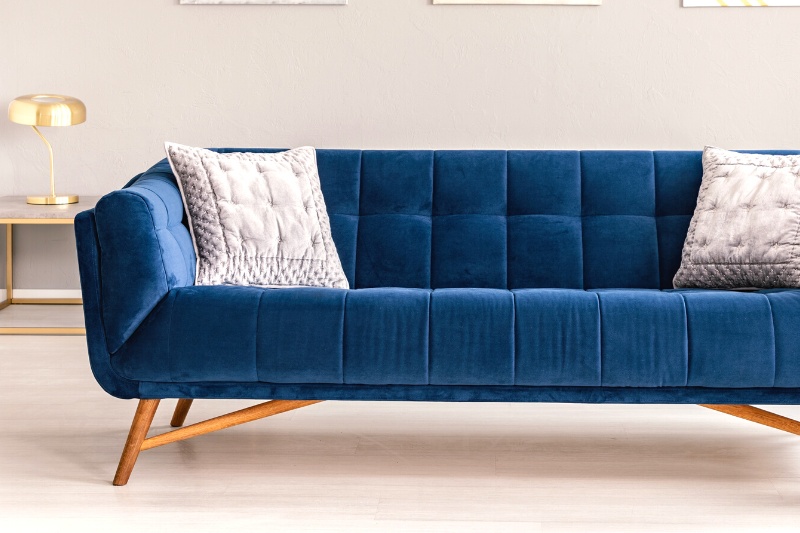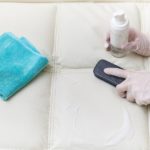Velvet sofas are incredibly popular, and for good reason. But a big downside of using velvet for a sofa is that it’s a high-traffic piece of furniture, meaning it needs to be cleaned regularly. Velvet, unsurprisingly, can be pretty difficult to clean.
But it’s entirely possible with a bit of care and the right products. Below, we’ll cover how to clean a velvet sofa.
What Is Velvet?

Velvet is a type of fabric made from tufted cut threads. Put simply, velvet threads are woven vertically and then cut to make the tufts.
All the cuts are equal in length, and the short, vertical fibres give the soft feel we’re all familiar with.
In the past, velvet was typically made from silk. Nowadays, though, it’s far more common for it to be made from synthetic materials.
But why does this matter for cleaning? When cleaning velvet, we need to take care to maintain its pile – the fuzzy feeling of its vertical threads.
These can be compressed through wear and cleaning, which changes the appearance and texture of velvet.
Also, it means that velvet is pretty porous – more so than normal woven fabric because there are more fibres per area.
However, this is balanced against them being synthetic, as plastic-based fibres are generally less porous than natural ones.
How to Clean a Velvet Sofa
Much of how to clean a velvet sofa comes down to regular upkeep. Using a vacuum cleaner is often enough to keep the pile looking fresh and remove most of the built-up dirt.
The steps for how to clean a velvet sofa are as follows:
1. Start with a vacuum cleaner
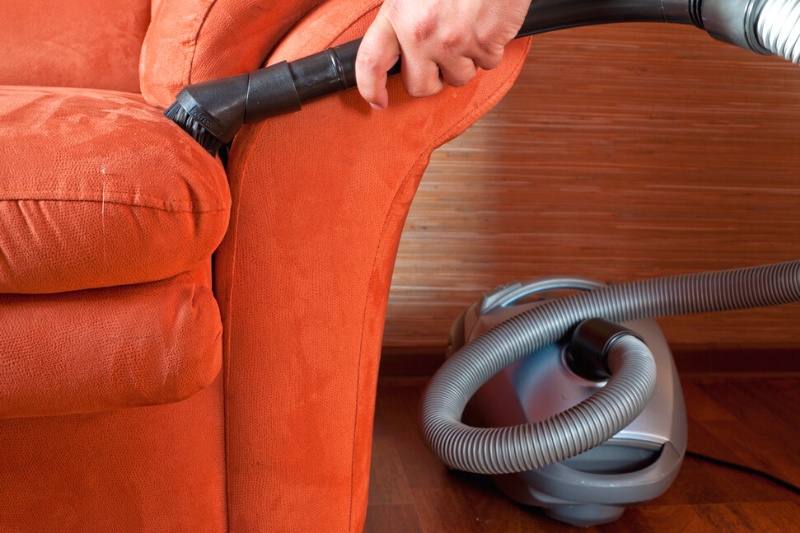
This is a bit of a no-brainer, but begin by hoovering your velvet sofa. If you have one, use the upholstery attachment, for obvious reasons. Failing that, the small brush attachment should work fine.
You’ll want to avoid using too much suction, as this could damage the fibres. The brush attachment reduces the vacuum cleaner’s suction power because it can’t create a tight seal against the surface you’re cleaning.
Go over the cushions and get in all the gaps you can to remove as much dirt and debris as possible. Do this once a month or so and your velvet sofa should stay looking fresh.
Alternatively, you can use a soft-bristled brush (such as a hairbrush) to knock the debris onto the floor, where you can then clean it up.
Make sure you don’t scrub the velvet but instead knock it with short, even strokes.
2. Spot-clean any stains
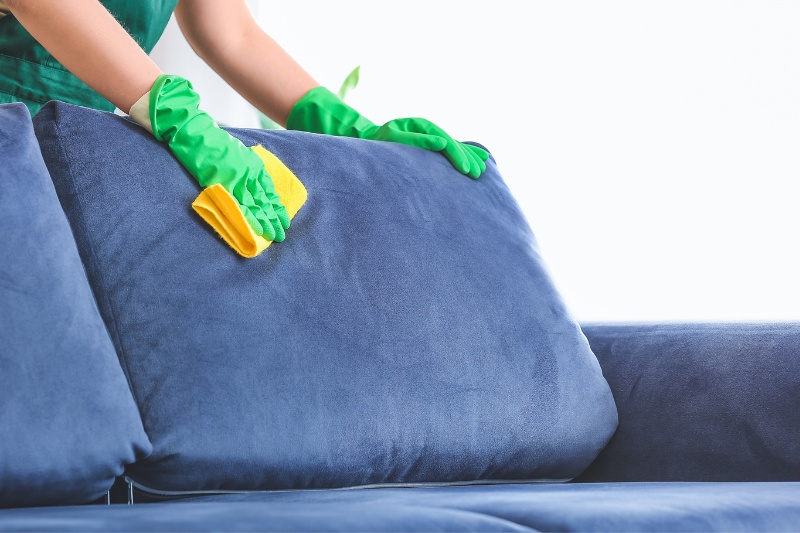
Ideally, you’ll want to tackle any stains while they’re still fresh (more on this below).
If this isn’t possible, you’ll have a bit more work ahead of you, but you should be able to remove most dried-on marks.
Mix a litre of warm water with a small squirt of laundry detergent. Washing up liquid is the next best thing, but laundry detergent will usually do a better job on fabrics.
You don’t need loads of product, just enough to form a few bubbles.
If you’re working with particularly stubborn stains, such as colourful food, you might want to use a dedicated upholstery stain remover.
Something like Geist Fabric and Carpet Cleaner will be a good option. Whatever you go with, check it’s safe to use on natural or artificial velvet.
Spot-cleaning stains is pretty easy. Dunk a microfibre cloth in your cleaning mix and work into the fabric in small, circular motions. Use as little liquid as possible because you’ll want to avoid it soaking in.
It’s a good idea to spot test your chosen cleaning product too. Test on a hidden area, such as underneath. Wipe some on and check after 5-10 minutes.
3. Rinse and dry the area
Rinsing the areas you’ve spot-cleaned involves rubbing them with a clean cloth and warm water.
Use the same circular motions and include a few backwards-forwards strokes, too. Again, avoid using too much water.
Provided you’ve been careful with your water use, it shouldn’t take too long to dry.
If you’ve been a bit liberal, you’ll want to gently rub the area with a towel to lift as much water as possible.
4. Restore the velvet’s pile
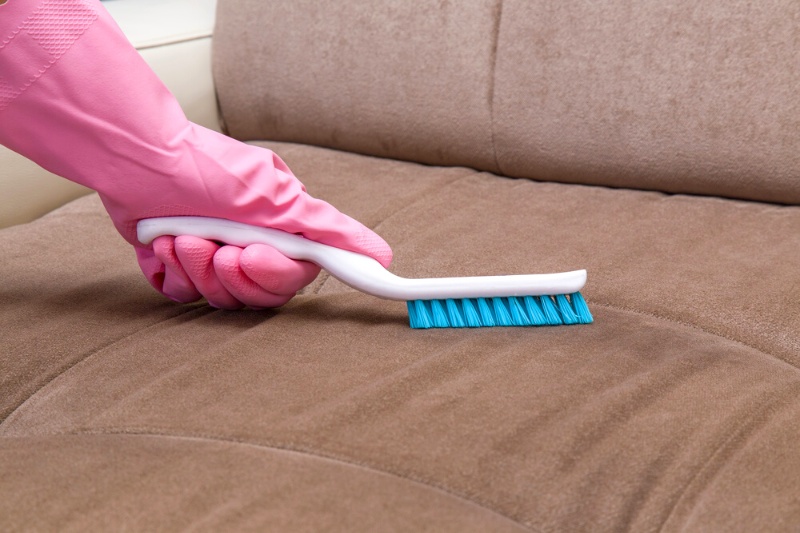
Once the area is dry, you’ll need to restore the velvet’s pile. You can also use this method on areas where it’s compressed, such as the cushions you sit on or the arms.
Get your soft-bristled brush back out and work on the area with short, flicking movements. This helps make the velvet look plush again.
For an even fresher appearance, try to get all the velvet fibres facing the same direction.
5. Protect the velvet
Finally, you might want to consider protecting the velvet. An upholstery spray, such as the Furniture Clinic Protector Spray, will do the job. It works much like shoe protector spray to help reduce staining.
You should apply this every month or so whenever you clean your velvet sofa.
Tips for Keeping Your Velvet Sofa Clean
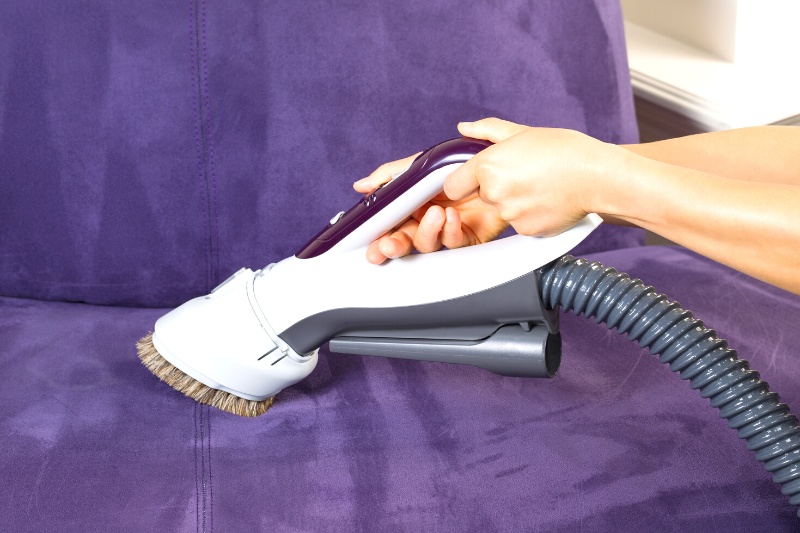
The method above is a general cleaning guide for velvet sofas. However, there are plenty of tips for keeping your sofa looking fresh in between cleans. These include:
Catch stains before they set
This is true for stains on any kind of fabric: aim to catch them before they set too deeply. The more of a stain you can remove before it dries, the easier it’ll be to remove completely.
Soak up liquids or remove solids and then work over with some laundry detergent in water.
Consider hiring a professional cleaner
Deep cleaning velvet usually involves dry-cleaning methods. While you can do this yourself, it’s usually much easier to hire a professional. Consider doing this once a year or so to really give your velvet sofa a refresh.
Always use microfibre cloths
You might have already noticed that velvet will hold on to loose fibres or hairs. For this reason, always use a microfibre cloth when cleaning.
When you’re working cleaning product into velvet, you risk leaving behind lint or small fibres.
Microfibre cloths are less prone to shedding fibres, meaning you shouldn’t leave the velvet looking worse than when you started.
How Do You Clean Velvet Without Ruining It?
The key to cleaning velvet without ruining it is to blot rather than rub. Similarly, working in circular motions avoids damaging the fibres.
Make sure you blot stains with an absorbent cloth, but cleaning products will usually need to be worked in. As mentioned, small and gentle circular movements are best for this.
Final Thoughts
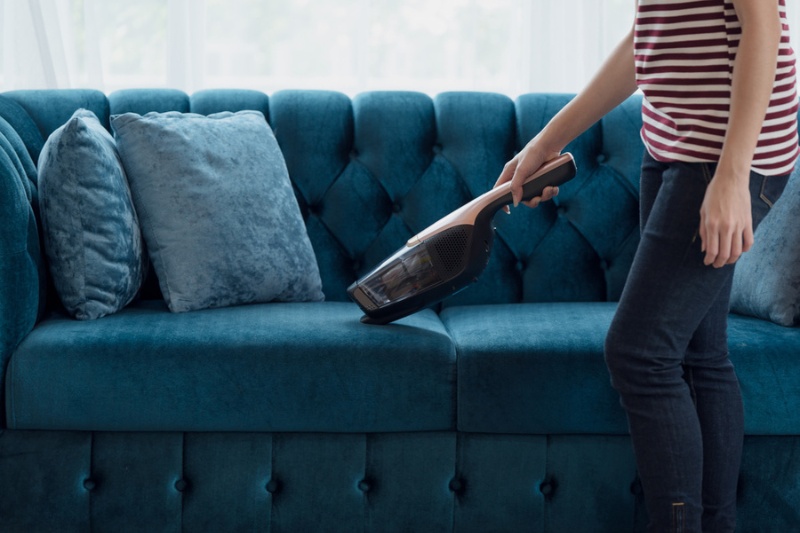
Hopefully, you now know how to clean a velvet sofa. The bottom line is to be as gentle as possible and take preventative rather than reactive steps.
Velvet is a plush-looking fabric that can look rough and tired after a really short time. Provided you use the right products, it should be easy to get it looking fresh and new again.

Jacob is a writer based in Wales, where he lives with his partner and two dogs. All his work is fuelled by extensive research and buckets of coffee.
